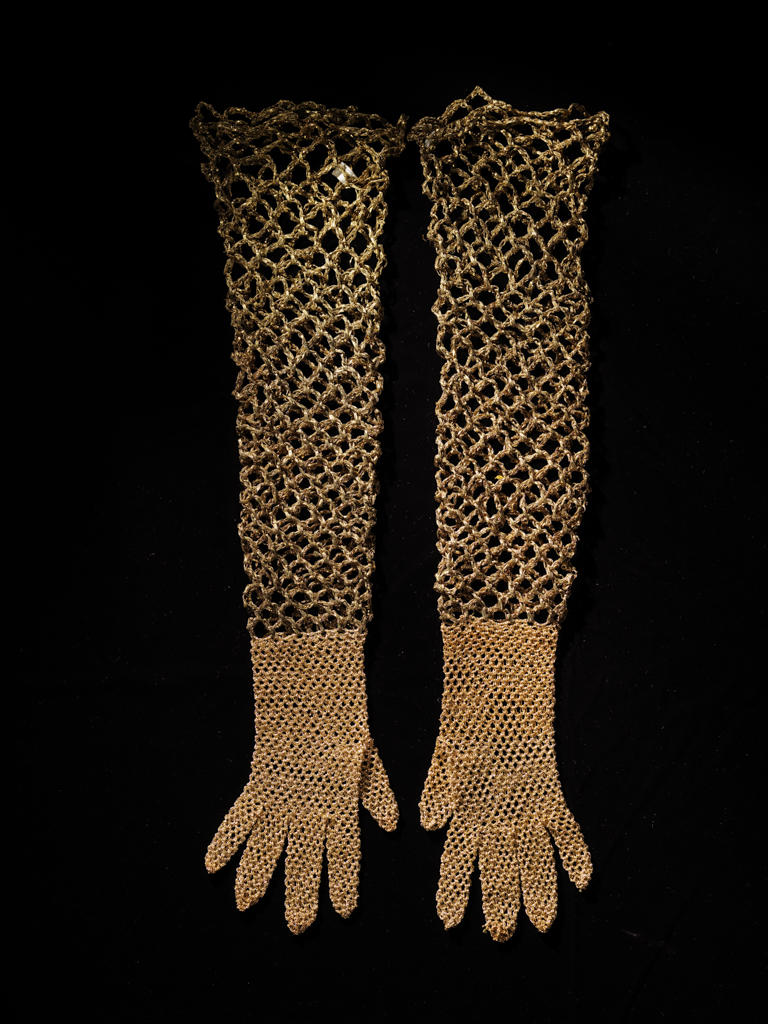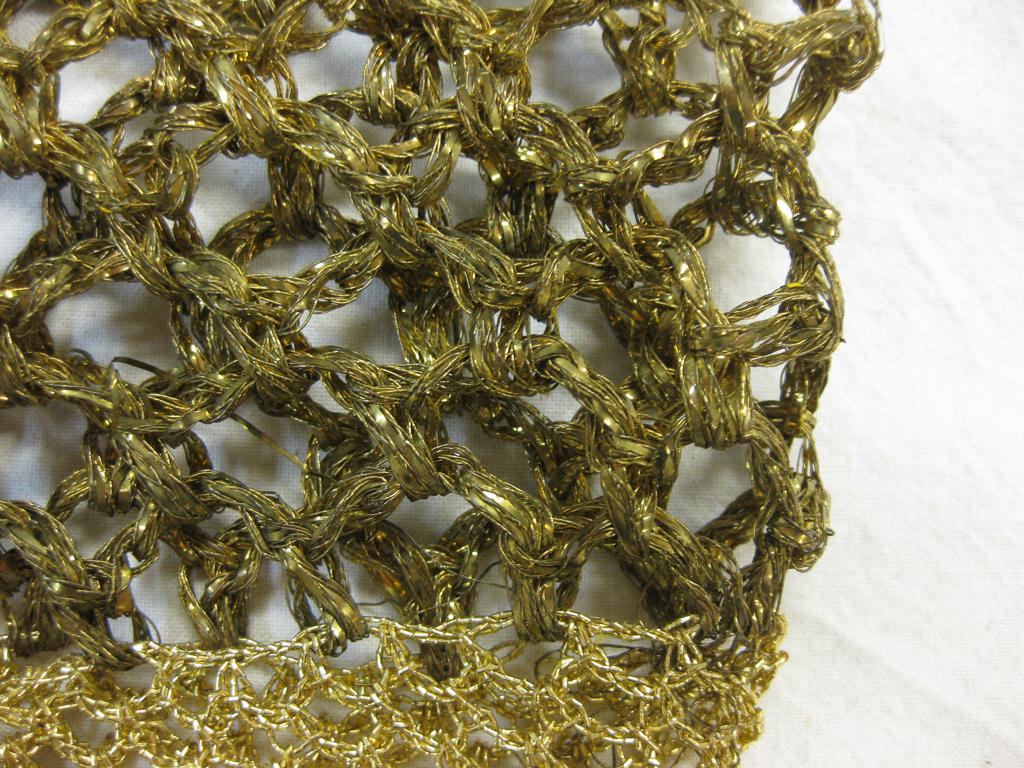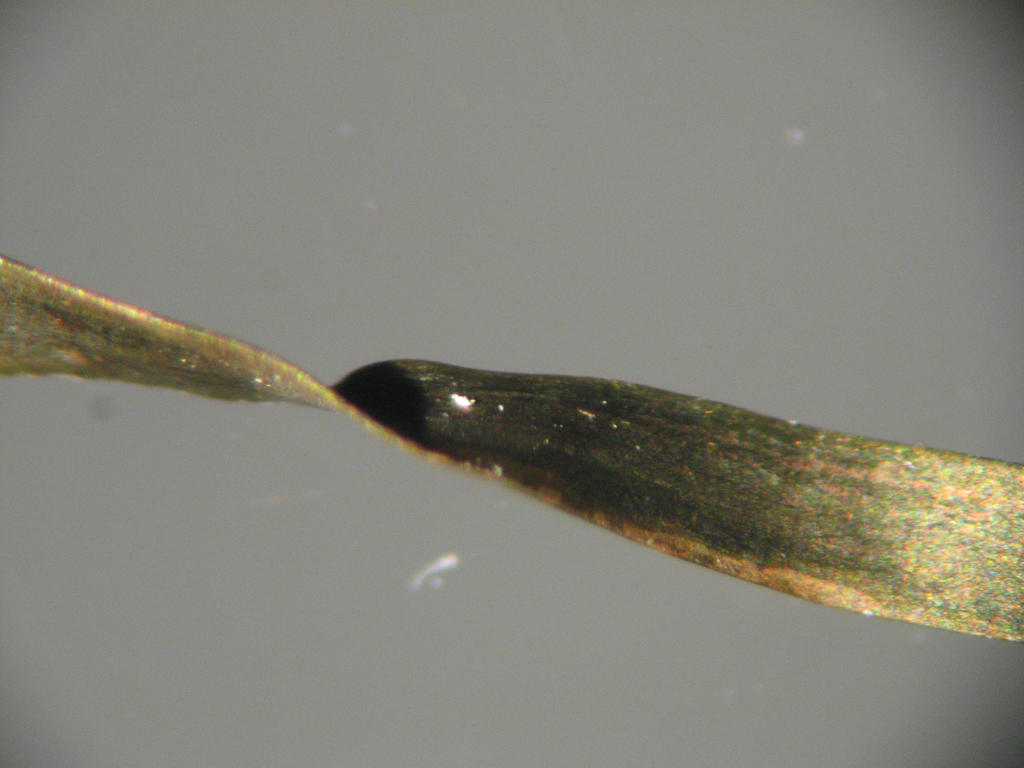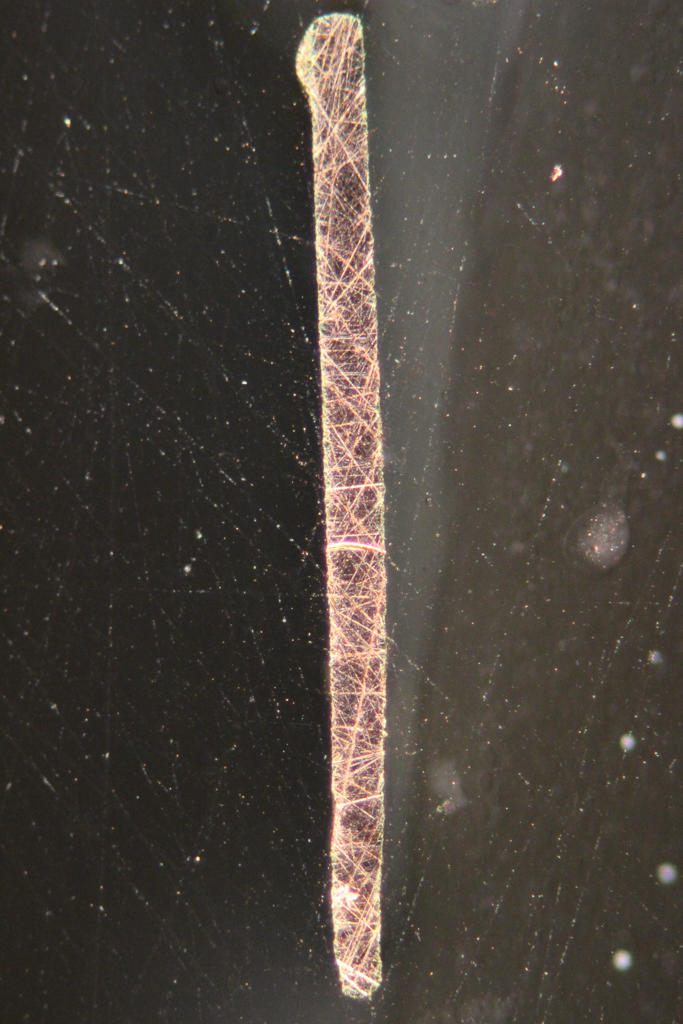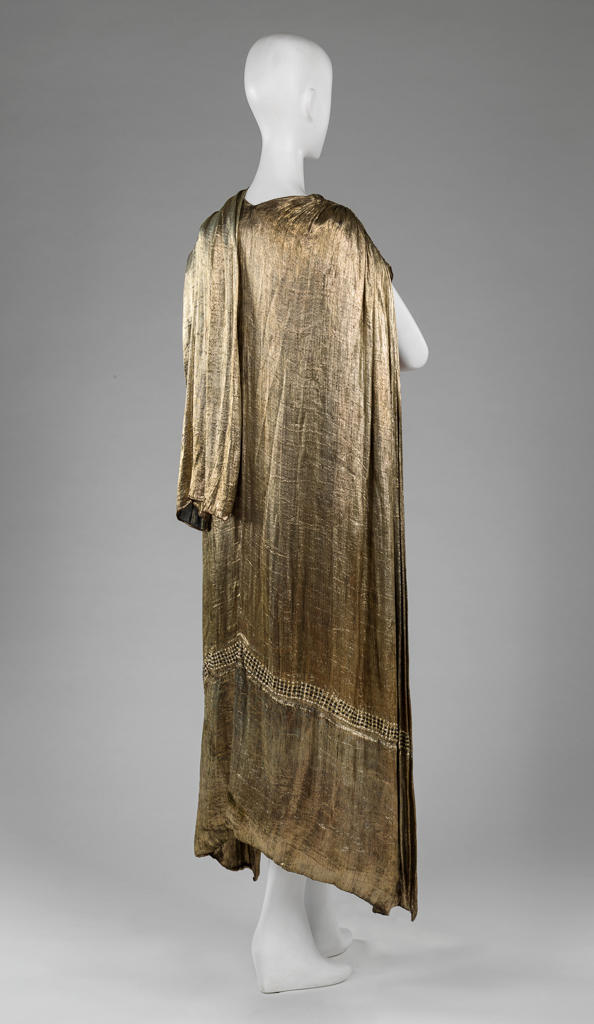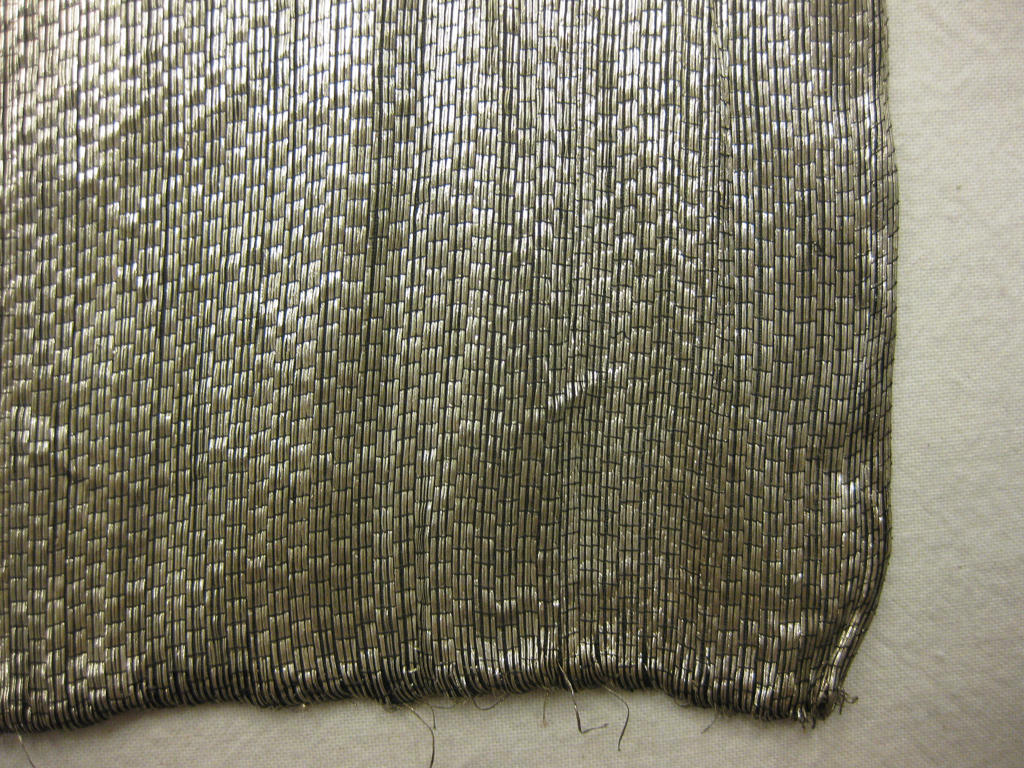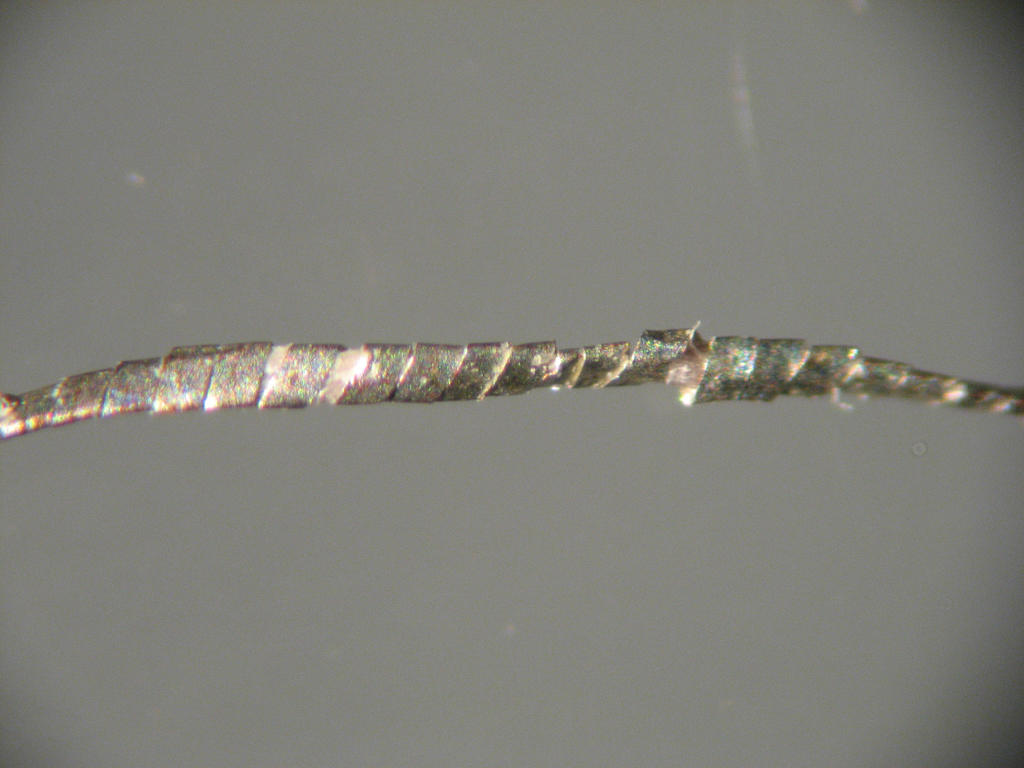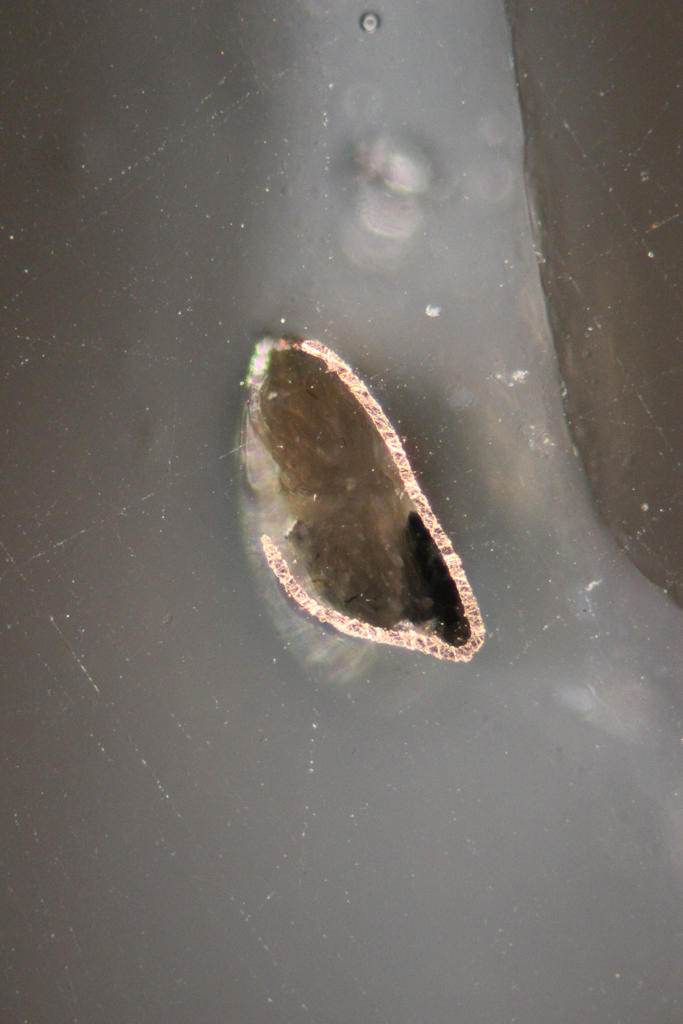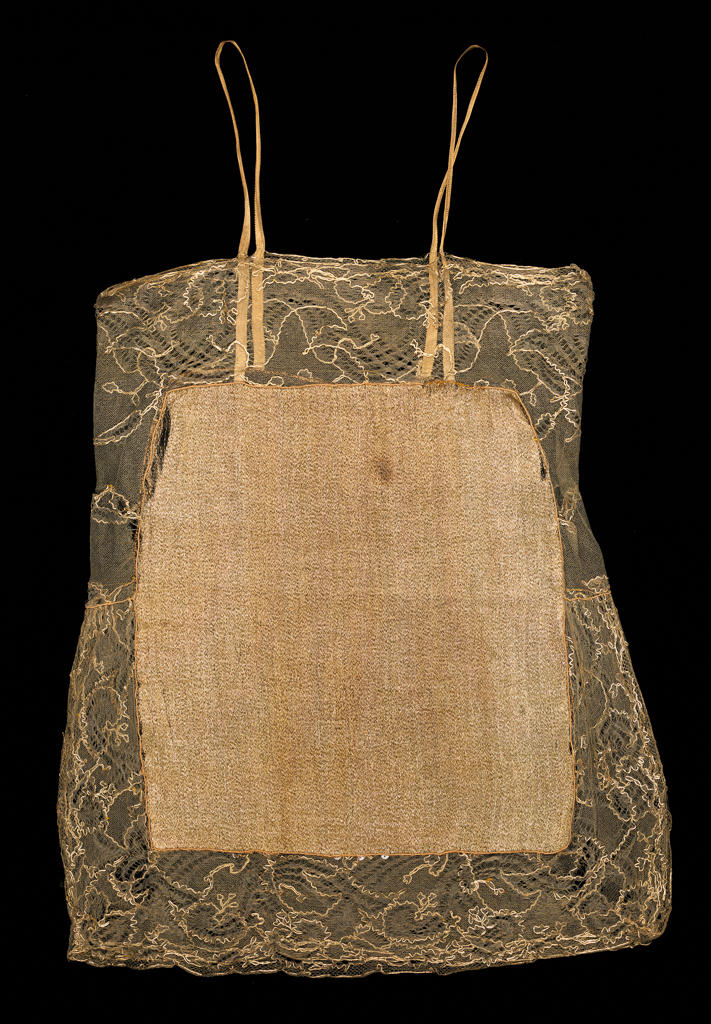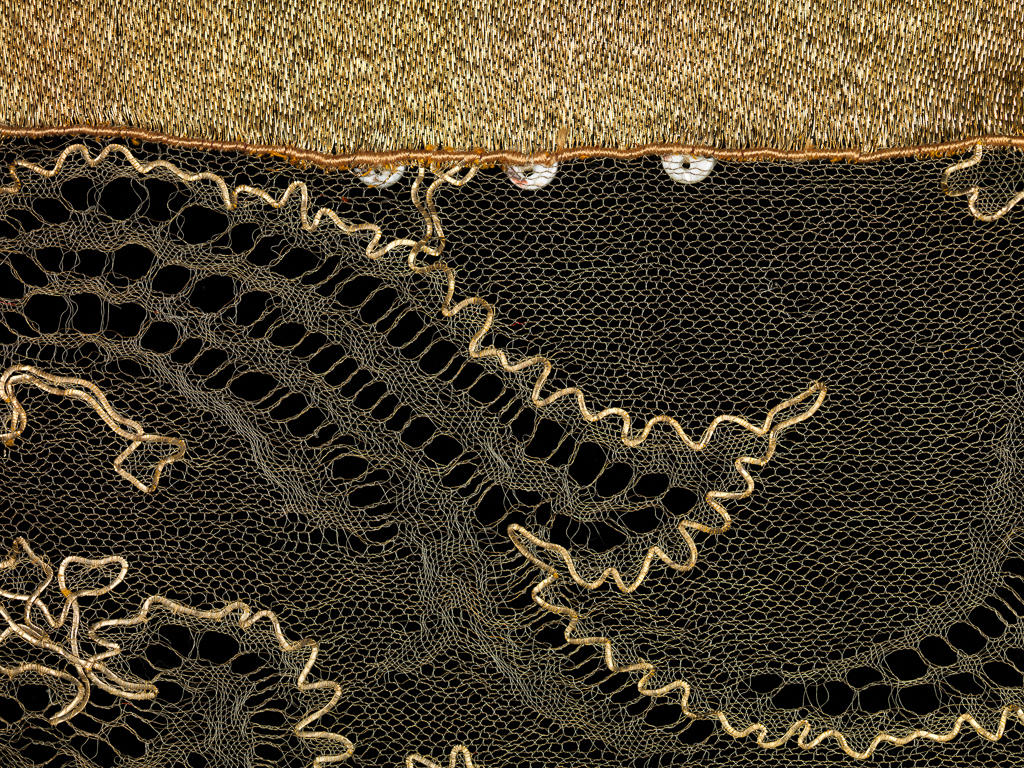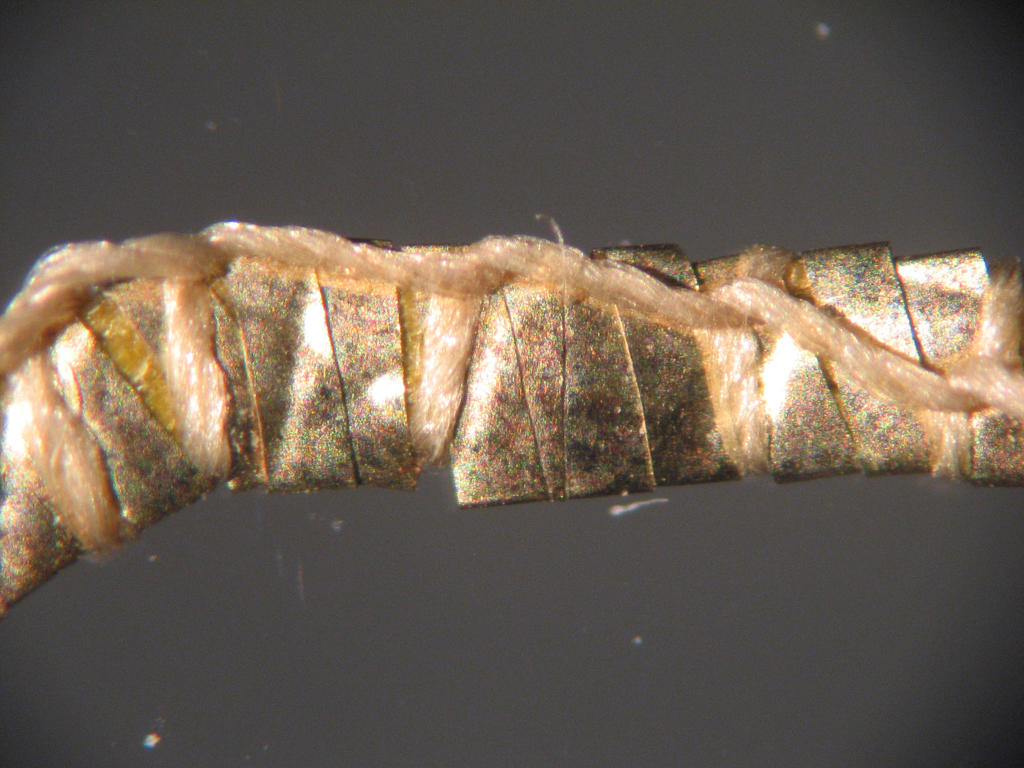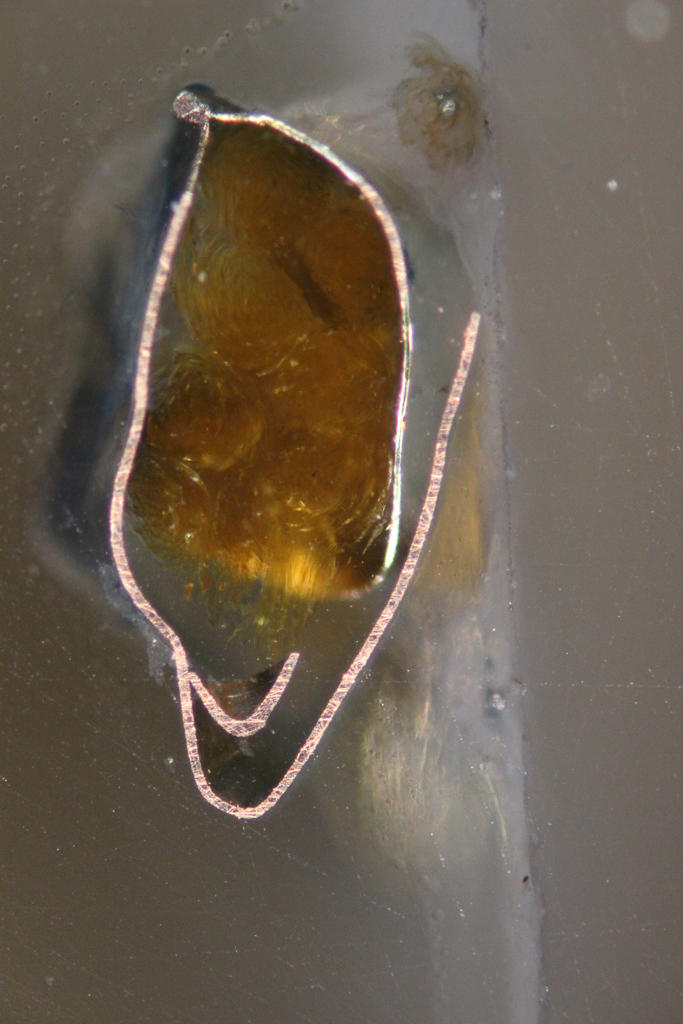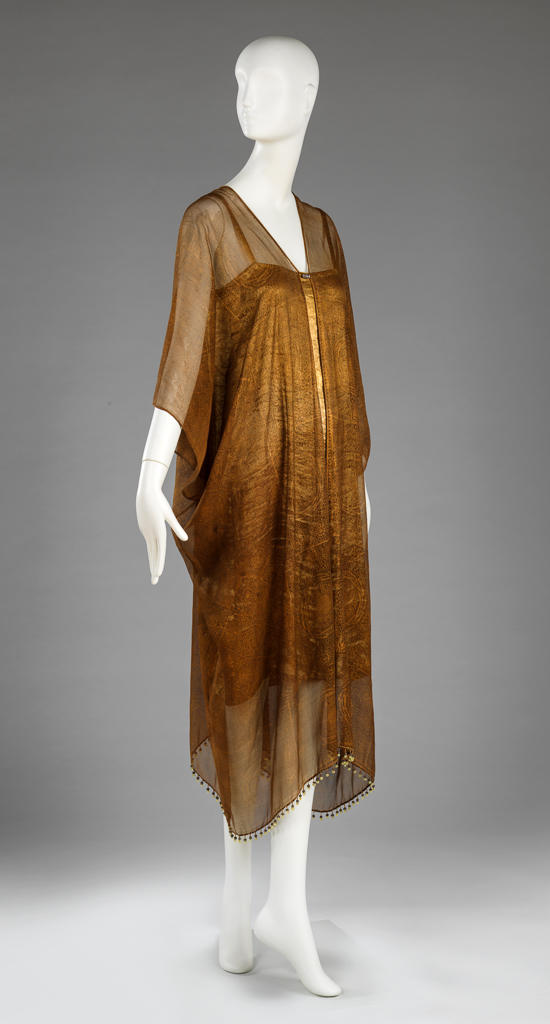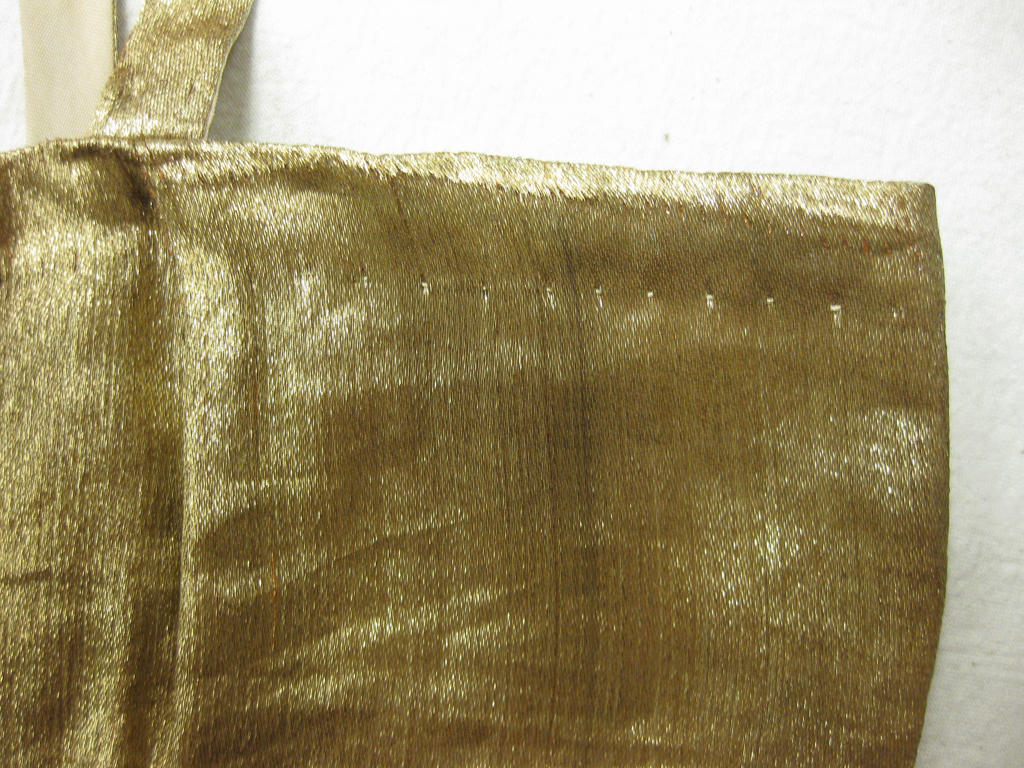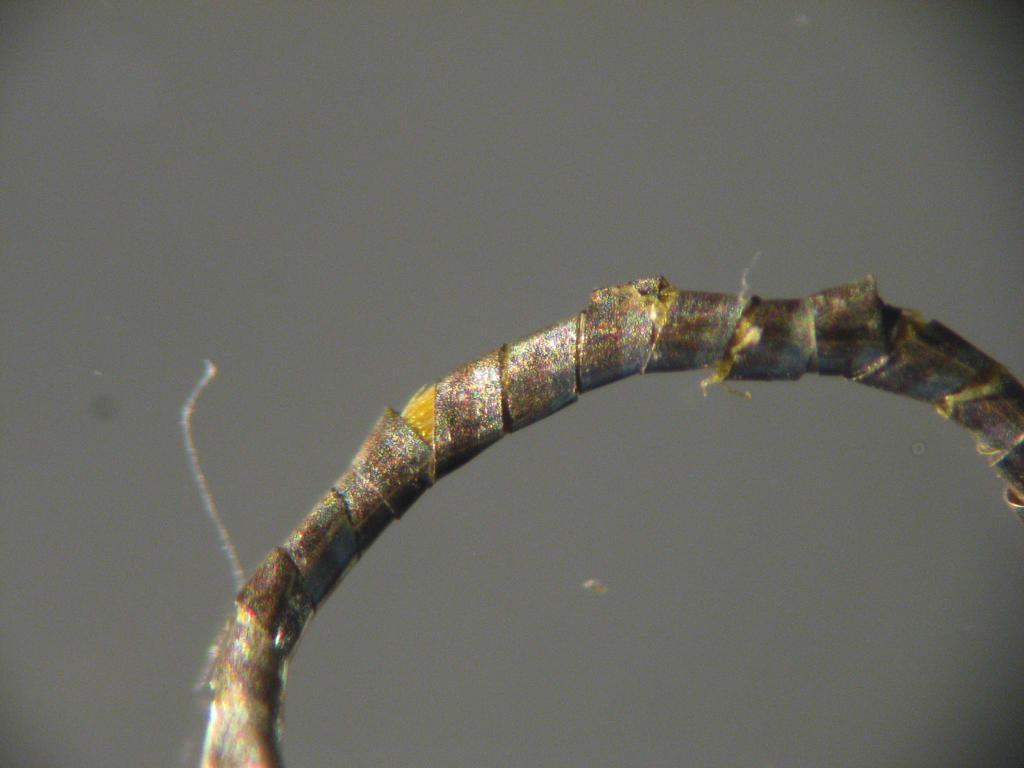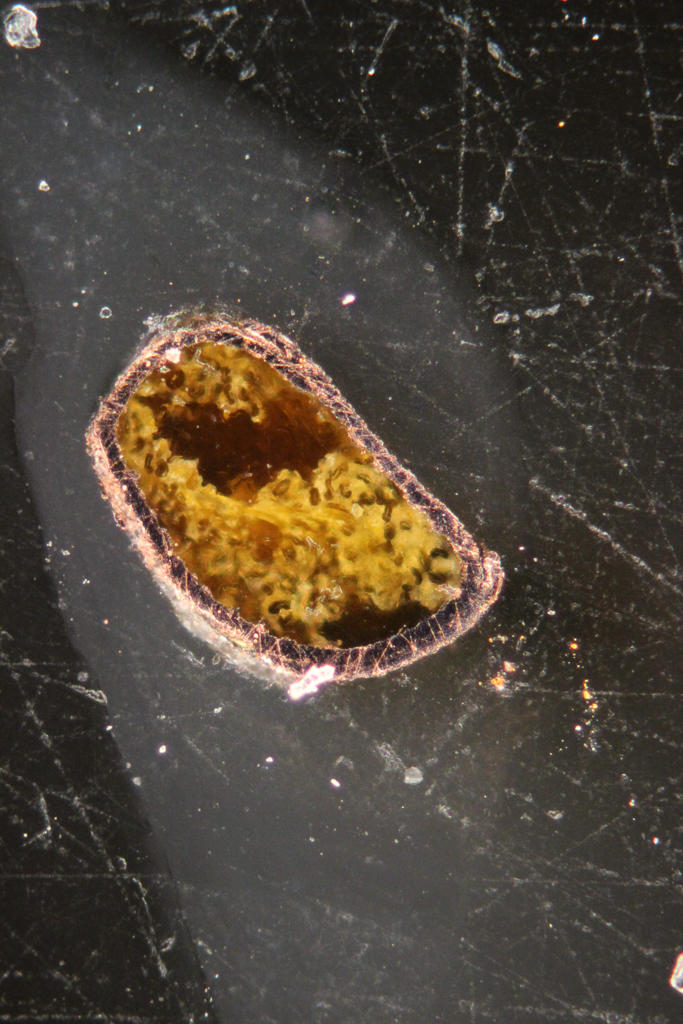Through the ages, gold and other precious metals have been used in the creation of textiles to elevate their symbolic importance. For conservators, fabrics incorporating metallic components raise complex questions about construction, materials, and manufacturing techniques, all of which impact how an object will be stabilized and displayed. Working on the exhibition Golden Glamour, organized by associate curator Laurie Brewer, sparked my interest in exploring metallic yarns. The metallic-heavy garments worn by Edith Stuyvesant Dresser Vanderbilt Gerry in the 1920s and ’30s, many of which were recently deinstalled from our Donghia Costume and Textiles Gallery, offered an excellent springboard for exploration during a bit of down-time this summer, between exhibitions. My initial research questions were very general: What kind of metallic yarns were used on Edith Gerry’s garments, and how do these examples fit into a larger narrative about metallic-yarn production and use?
The widow of George Washington Vanderbilt II, Edith married Rhode Island senator Peter G. Gerry in 1925. After her death in 1958, the Gerrys’ house was gifted to the RISD Museum, along with a small cache of Edith’s garments. Her ensembles showcase the careful construction and custom fitting achieved by great design houses of the early 20th century, including Worth, Fortuny, and Molyneux. The garments’ luxurious appearance is amplified by their gold or silver sheen, produced largely by metallic yarns woven into the fabric or added as supplementary embellishment.
Metallic yarns and threads have played a significant role in luxury textiles throughout history and across many cultures. During the 19th and 20th centuries, developments in metallurgy and textile science allowed for use of alloys, electroplating, and laminates that mirrored the appearance of silver and gold at a lower cost. The value of metallic yarns, however, lies not exclusively in the materials but in the time and care required to spin fibers and prepare thin strips of metal. Labor and cost are compounded by the quantity of metallic yarns required for a single textile. For example, Edith’s cape by the House of Worth, pictured below, contains more than four miles of glittering weft.
To discover more about Edith’s metallic yarns, I first examined them with a stereomicroscope, which revealed an exciting assortment of structures. Some are comprised of simple metal strips, while others feature the tell-tale “barber pole” appearance of metal wrapped around a twisted fiber core. Next, cross-section samples were prepared by slicing off tiny portions of loose yarns and mounting them in resin. These samples revealed additional variation in how each yarn was made.
The hands of these Schiaparelli gloves were made from gold-toned metallic tape, twisted into mesh.
The fabric of this Worth cape was woven with silver yarns made from a silk core wrapped with a thin metallic tape.
On this chemise, a very thick metallic yarn is incorporated as a supplementary embellishment.
In contrast to the thick yarn of the chemise, a very fine wrapped-core yarn was used to weave the fabric of this dress.
This preliminary investigation suggests that although developments in technology allowed for new end products during this period, many metallic yarns and threads at the upper end of the textile market remained similar in structure to more traditional examples. The diversity of these samples—and their irregularities, which suggest the work of human hands—point to manufacturing techniques that may have benefited from industrial advances but still relied heavily on skilled artisanship.
As always, many questions remain. Now that I have explored the basic structure of our yarns, the next step will be analyzing their materials to determine the metals used in their construction and, eventually, comparing them to objects in our collection from other cultures and time periods. In addition to informing future preservation efforts, this knowledge will further orient the garments within a larger narrative about luxury-textile production.
Special thanks to Jeff Moore, formerly of the Preservation Society of Newport County, for providing his laboratory facilities for my investigation.
Jessica Urick
Preservation Specialist, Costume and Textiles
